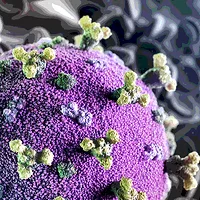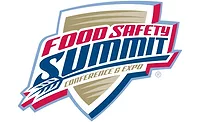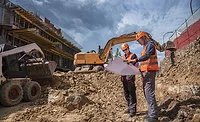Impact of SARS-CoV-2 on the Meat Industry and Food Safety

Food and agriculture together are one of 16 critical infrastructures, deemed by the U.S. government to be essential to the well-being of both the U.S. people and the U.S. economy. Before the COVID-19 pandemic, food- and agriculture-related employment comprised 11 percent of all U.S. employment, representing 22 million full- and part-time jobs. Overall, agriculture, food, and related industries contributed $1.053 trillion to the U.S. gross domestic product in 2017, or approximately a 5.4-percent share.[1] In 2017, the meat and poultry industry composed the largest segment of U.S. agriculture, with U.S. meat production totaling 52 billion pounds and U.S. poultry production totaling 48 billion pounds (2017).[2]
It is fair to say that COVID-19 has not only changed the world and caused immeasurable damage to global public health, it has also altered the traditional way the world has conducted business. In late April 2020, the pandemic gave the appearance of being at the end of the beginning, meaning that the global impact would continue short to medium term, but also that economies were becoming so damaged that the call for re-engagement was growing increasingly louder in many parts of the world. Many believed that the U.S. and the world needed to get back to work.
China, the likely origin of the virus, has also been economically damaged, in some ways more greatly than the U.S.[3] Effects originating in China have cascaded into the global economy in unexpected ways. Meat exports to China, for example, have been impacted by processing plant closures. Processing plant closures likewise have caused cascading effects, impacting farmers and grow-out operations.
COVID-19 testing continues to expand, but the real requirement for repairing the economy is a vaccine, which remains for now over the horizon. Once available in needed volumes, perhaps in the late first or second quarter of 2021, aggressive vaccination programs could begin enabling higher-risk employees to come back into the workforce. In the meantime, it is likely that low-risk employees will start returning to work relatively soon, using staggered shift and other types of localized and domain-specific managed strategies.
High infection rates among processing plant workers have led to the closures or curtailing of operations at pork, beef, and poultry processing plants across the country, raising the specter of nationwide meat shortages. In an unprecedented move, President Donald J. Trump issued an Executive Order placing the American meat industry under the Defense Production Act to keep meat processing facilities open.
So, what does all of this mean to the safety of the U.S. meat and poultry supply, and the safety of the thousands of workers in the industry?
No Evidence of Transmission in Beef or Poultry
Currently, and thankfully, there is no evidence to suggest that domestic livestock or poultry play a role in the spread of SARS-CoV-2. It’s not that coronaviruses can’t cause disease in livestock and poultry, but Severe Acute Respiratory Syndrome-Coronavirus 2 (SARS-CoV-2) is currently not associated with disease or disease transmission in either livestock or poultry.
Coronaviruses are a large family of viruses that can potentially cause illness in animals or humans. In humans, several coronaviruses are known to cause respiratory infections ranging from the common cold to more severe diseases such as Middle East Respiratory Syndrome, SARS, and most recently COVID-19. In animals, coronaviruses are most commonly associated with respiratory and gastrointestinal disease. It is very important to understand, however, that not all coronaviruses are alike, and the recently discovered SARS-CoV-2 is not currently associated with disease in domesticated livestock or poultry.
Animal infection models are currently being explored to gain a better understanding of the potential host range for SARS-CoV-2 in an effort to help veterinarians and public health professionals better understand what role, if any, animals might play in the current COVID-19 pandemic. Results of those studies have so far indicated that bats, ferrets, golden Syrian hamsters, and cats can be experimentally infected with the virus and can then spread the infection to other animals of the same species in laboratory settings. Pigs, chickens, and ducks, however, have so far not become infected or found to spread SARS-CoV-2. For more information, visit the American Veterinary Medical Association COVID-19 webpage.
There’s still a lot more work to be done in this area, but the good news right now is that there seems to be limited potential for spread of COVID-19 via domestic animals. Regardless of the situation with COVID-19, ensure good food safety practices at all times. For example, always handle raw meat with care to avoid contamination of uncooked foods, and avoid consuming raw or undercooked animal products.
Food Safety Concerns
Consumers have had questions and concerns about COVID-19 and food safety almost from the beginning of the outbreak. Concerns are understandable, as our food is handled by numerous individuals before we consume it, and we have learned that the virus can spread by infected individuals through common contact surfaces.
There are, however, a few important things to consider. First, this is a respiratory virus, not an enteric virus, meaning it infects the lungs, not the gastrointestinal tract. Second, most raw meat that is sold will be cooked before consumption. Any virus that was present on that meat would be killed by cooking temperatures. Third, there are existing protocols in place to decrease the transmission of pathogenic microorganisms from food handlers. During the time of COVID-19, these procedures have been increased, leading to more frequent hand washing or wearing of gloves in processing plants and foodservice establishments, wearing of masks and/or face shields by foodservice employees, and more frequent sanitation of contact surfaces in food processing plants, grocery stores, and foodservice establishments.
Consumers are also taking increased precautions, such as using hand sanitizer or gloves before and after grocery shopping and removing delivery/takeout food from containers and transferring to other containers before consumption or refrigeration. The U.S. Food and Drug Administration has summarized these recommendations for consumers, as well as the food industry, to decrease risk of COVID-19 transmission through food.[4] To date, there has been no association between food products or food packaging and COVID-19.
Production Worker Safety
Increasing reports of widespread COVID-19 infections among workers at meat, pork, and poultry processing plants have put the spotlight on worker safety. Poultry processing facilities have been working with government and health agencies to develop the most up-to-date recommendations for worker safety; outlined here are their best practices. The same measures will work for processors of beef and pork, but it is important to remember that recommended actions continue to change. These suggestions may evolve as time passes and we understand more about COVID-19 transmission, prevention, and risk, so always monitor and follow the most up to date information provided by government officials and the U.S. Centers for Disease Control and Prevention.
Communication: The first area of importance is communication. Post information on TVs and in breakrooms, including what COVID-19 is and how to prevent spreading it, as well as what needs to be done daily both at work and at home. In addition, post signage in multiple languages (based on the common languages for that facility) about social distancing, what to do when coming in to work, restroom lines, food lines, sitting at the break tables, etc. Finally, let employees know you care about them and will do your best to help everyone stay healthy.
The second area to where you need to pay attention is employee wellness. Employees with any symptoms, as well as anyone who has been in direct contact with one of those employees, should be sent home until they test negative for COVID-19. An employee who is currently sick should not allowed to work until he or she presents valid documentation from a physician.
Another best practice is to check employees’ temperatures as they enter the facility, and set up hand sanitation tubs with a mixture of 200 ppm bleach and water at every plant entrance. Signs in multiple languages should instruct everyone to sanitize their hands before entering the plant, and sanitizer should be replaced multiple times during each shift to retain efficacy. Encourage employees to wear cloth masks to cover their mouths and noses, and consider procedures for handling high-risk employees, such as those who are over 65 or have preexisting health conditions.
Social distancing: Social distancing is another important way to limit infection. Limit gatherings to four people who are 6 feet apart meeting in one office for no more than 9 minutes at a time. Also, rearrange breakroom tables to space people out as much as possible, and limit seating based on table size. For example, seat only one person per side, even if normally two people could sit on each side. Also, add a 10-minute break between employee breaks to sanitize break areas, tables, bathrooms, and hooks for aprons.
It is also a good idea to divide employees into separate groups that alternate work days as a way to minimize the number of employees present in the facility. Minimize the volume of employee flow by staggering employee breaks and start/stop of shift times, and add barriers between workers on the line. Finally, cancel nonessential meetings, use video conferencing for essential meetings, and eliminate employee travel as much as possible. Have office employees work from home if possible.
Facility sanitation: In the critical area of facility sanitation, it is wise to increase the number of housekeeping personnel and update their daily procedures to ensure they have time to sanitize more areas. Place additional wall-mounted hand sanitizer stations in frequently used areas, and properly maintain foot baths. Sanitize frequently touched surfaces with a chlorine solution on an hourly basis. This would include doors, doorknobs, plastic curtains, breakroom tables, barriers, light switches, phones, hand rails, microwave handles, vending machines, bathrooms, locker doors, soap dispensers, trash cans, paper towel holders, hand dryers, light switches, chairs, filing cabinets, keyboards/mice, the copy machine, coffee makers, writing utensils, radios, etc. Be sure to also include any outdoor common use areas.
Also, conduct random swabbing of sanitized surfaces to verify sanitizer effectiveness. Develop and use a sanitizing log book, detailing daily tasks completed by the housekeeping staff. Prop open doors and plastic curtains to minimize the need to touch them, remove trash can lids to avoid repeated contact when opening or closing them, and use a hurricane fogger containing sanitizer to fog common areas. Breakrooms and bathrooms should be fogged daily and offices weekly.
All facility departments and equipment (e.g., maintenance shops, shipping offices, pallet jacks, yard trucks, etc.) need to be included in facility sanitation procedures, and daily Sanitation Standard Operating Procedures should be developed and implemented for transportation vehicles. Have a sanitation team on call for a full-facility sanitation in the event an employee contracts COVID-19.
Visitors: Temporarily ban nonessential visitors, and increase screening of essential visitors and contractors at the entry gates. Restrict entry of anyone that has traveled to a Level 3 country in the last 14 days. Finally, keep new applicants isolated from general use areas.
Production Capacity Interruption on Retail Offerings
From a red meat production standpoint, COVID-19 has caused immense disruption and turmoil. During the early stages of the outbreak, market volatility seemed to be largely a result of the economic crash and not due to real issues in the supply chain. That all changed in early April, as workers in processing facilities across the country began to test positive for COVID-19. As a result, many plants either closed or reduced processing capacity greatly.
In the beef industry alone, the total number of cattle slaughtered per week was reduced 25.1 percent from April 6 to April 27.[5] This means that roughly 371,000 head of cattle haven’t been processed that normally would have been processed, causing a logjam of market-ready cattle on one side and a deficit of beef being produced on the other.
The swine industry experienced a similar reduction of 27.6 percent from March 28 through April 25, resulting in a staggering 1.8 million pigs missing from the slaughter totals in that 4-week period.[5] With a production system that relies on much tighter timing windows than the beef industry, swine producers are facing an unprecedented challenge of falling prices and a lack of marketing options, with no ability to wait for better conditions.
What Will the Future Bring?
We do not have the abilities to visualize the future with a lot of clarity. There is no magic car to hop in for a trip to the future to aid in defining the eventual appearance of the meat industry, although we know the industry is devoted to producing safe and wholesome meat products for customers and consumers.
We have recently witnessed idling of meat processing facilities as a result of COVID-19. This has disrupted the production chain from farm to fork, but the meat industry will make every effort possible to continue production. In moving forward post-pandemic, we will witness a passionate industry that will remain dedicated to meat and food production. More importantly, the meat industry will tackle the future of meat production with science-based knowledge to protect not only the food supply but the employees responsible for producing safe meat and food products within a safe environment.
Dr. Robert Norton is a professor of Poultry Science at Auburn University. Dr. Soren Rodning is an associate professor of Animal Science at Auburn University and an animal sciences and forages specialist with the Alabama Cooperative Extension System. Dr. Emefa Monu is an assistant professor of Food Science at Auburn University. Dr. Dianna V. Bourassa is an assistant professor of Poultry Science at Auburn University and a poultry specialist with the Alabama Cooperative Extension System. Alex Tigue is a regional agent with the Alabama Cooperative Extension System. Dr. Jason Sawyer is an associate professor of Animal Science at Auburn University.
References
1. www.ers.usda.gov/data-products/ag-and-food-statistics-charting-the-essentials/ag-and-food-sectors-and-the-economy/.
2. www.meatinstitute.org/index.php?ht=d/sp/i/47465/pid/47465.
3. www.uscc.gov/sites/default/files/2020-04/Cascading_Economic_Impacts_of_the_Novel_Coronavirus_April_21_2020.pdf
4. www.fda.gov/food/food-safety-during-emergencies/food-safety-and-coronavirus-disease-2019-COVID-19.
5. mymarketnews.ams.usda.gov/viewReport/3208.
Looking for quick answers on food safety topics?
Try Ask FSM, our new smart AI search tool.
Ask FSM →








